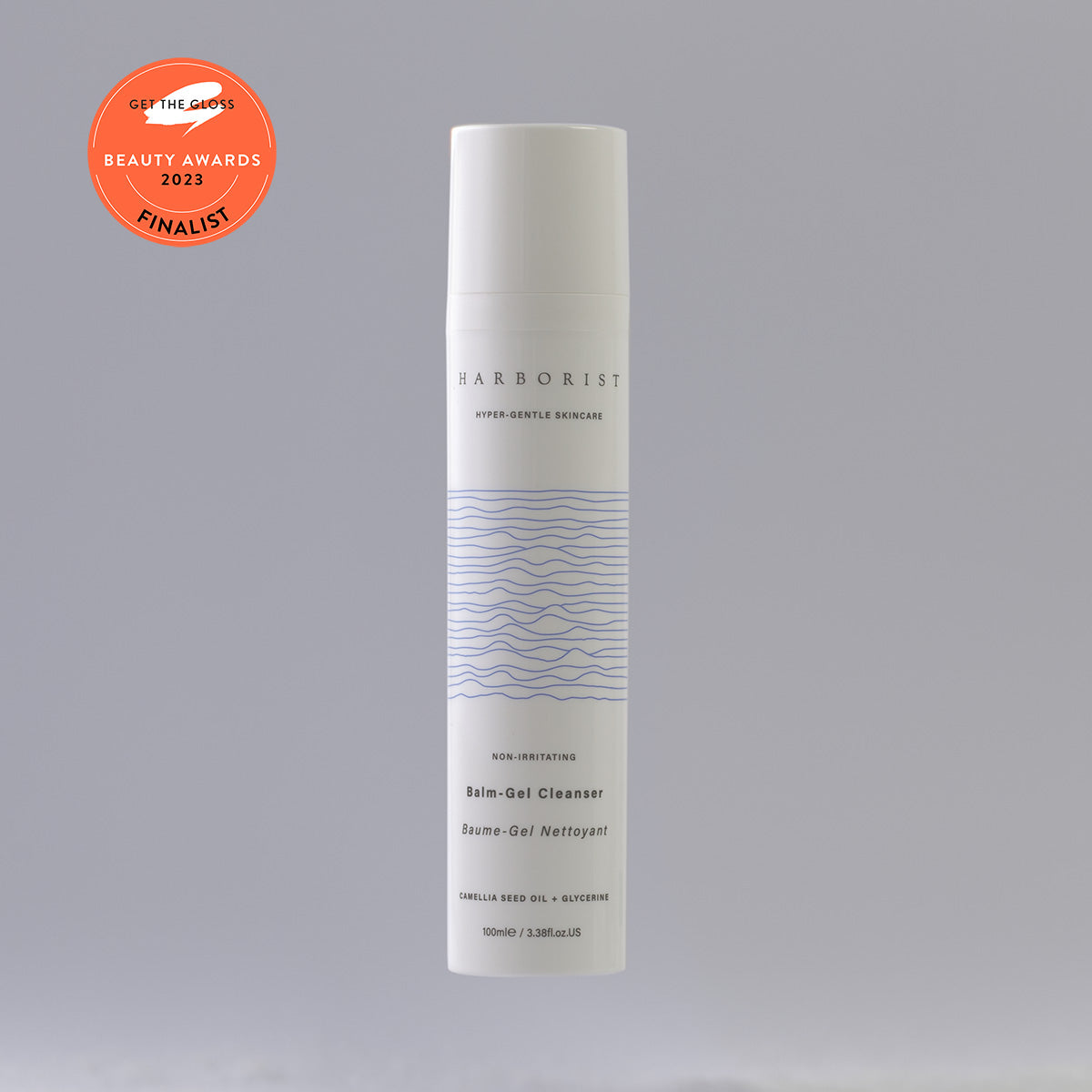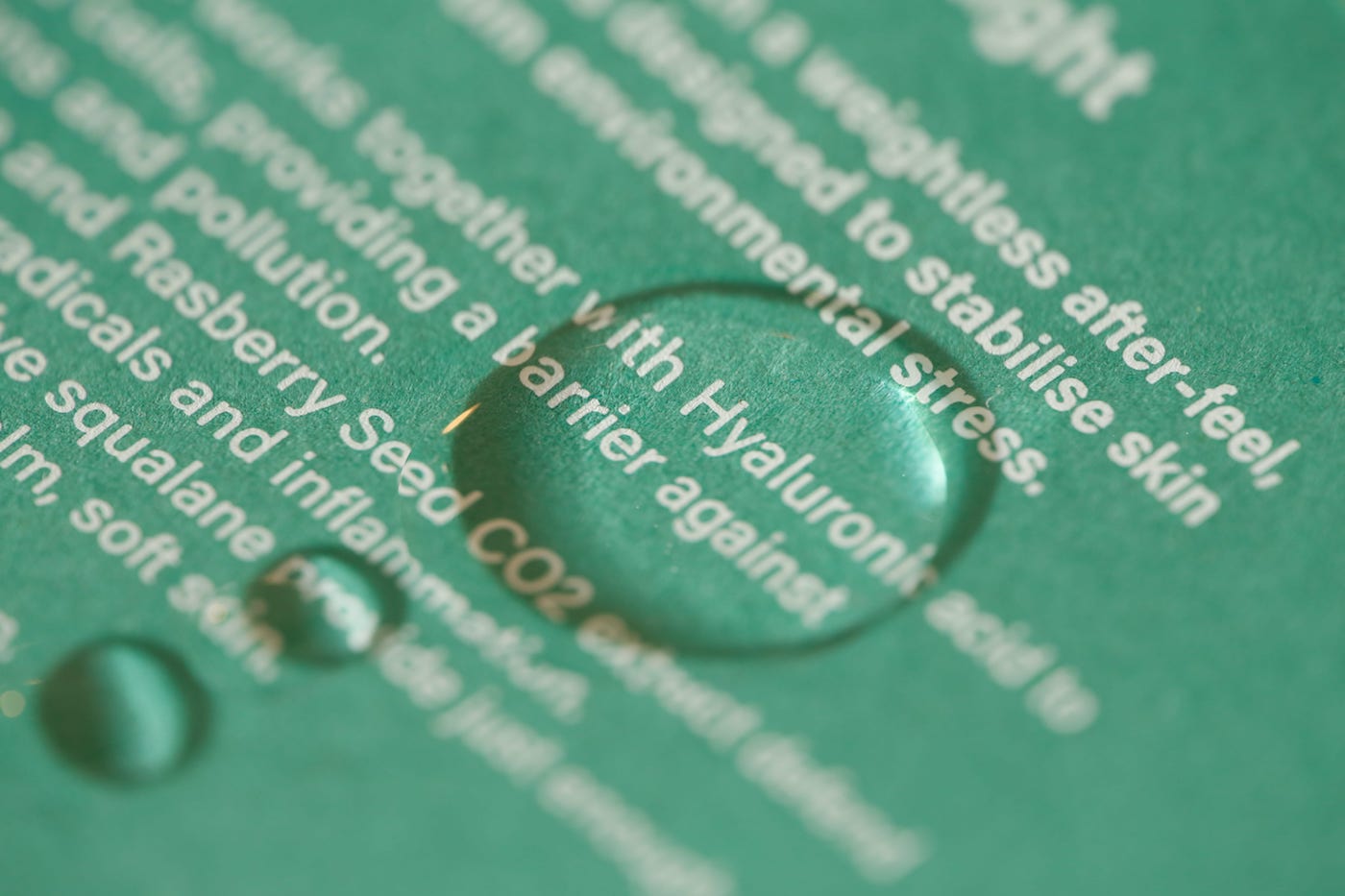Hyaluronic acid is everywhere because it's a great humectant. It holds onto water, helping to keep it in your skin. But some of the myths surrounding this ingredient can make choosing the right product more complicated than it needs to be.
So to start with, here are three of the myths I've seen most, though there are definitely more than three!
Hyaluronic acid myth 1:
It needs to be at a high percentage to work.
Hyaluronic acid (HA) comes in different weights. The threshold for each weight varies, but the categories go something like high weight > medium weight > low weight > extra low weight.
High weight HA is considered an ideal weight for sensitive skin due to it's anti-inflammatory potential. It's typically around is 1.0 – 1.5 million daltons. For reference, glycerine is just 92 daltons, so this is a large molecule. The high weight version forms gels. This means you use very little of it; enough to form a hydrating 'mesh' on the outer surface of your skin, but not too much to create an un-pourable liquid. This mesh can creates a slight tightening feel while it's forming - so if you've ever felt that with a HA serum, it's probably a high weight that's in there.
In contrast, low weight HA has been broken into fragments. It doesn't create that same network, so it isn't able to form a gel. This means it's possible to include it at a much higher %. So if you see hyaluronic acid high up on the INCI (that's the ingredient listing), it likely means a mix of weights or a lower weight HA has been used.
It's also worth noting if a formulation contains a blend of different weights of Hyaluronic acids, it would still be listed as just one ingredient on the INCI list.
Hyaluronic acid myth 2:
Sodium Hyaluronate penetrates the skin better than Hyaluronic acid because it's a smaller size.
A bit of a technical one which I'll cover as it's something I've seen a lot, and I'm not sure how it came about.
Hyaluronic acid comes in two forms - hyaluronic acid or sodium hyaluronate. Sodium hyaluronate is the salt form of hyaluronic acid. It's available in all sizes, from high to low. So seeing sodium hyaluronate on the ingredient list doesn't tell you anything about the weight - it could be a smaller weight but it could be any weight! The larger weights are unlikely to penetrate the skin much, if at all (see below).
On your ingredient list, you're most likely to see Sodium Hyaluronate because it's the most available and practical to work with.
Hyaluronic acid myth 3:
A mix of different weights of hyaluronic acid means it can hydrate the skin at different depths.
Though there are specialised nano and encapsulated forms of hyaluronic acid, I'll leave those to one side because they're less common and often have a different INCI name.
All weights of standard HA are big molecules, too big to penetrate the skin easily. The lowest standard weight, often called super low weight, would be something like 6,000 daltons. That's around 12x what's typically accepted as being small enough to get through the skin's layers. This doesn't make skin penetration impossible - it may degrade into smaller fragments once on the skin for example. It does make it more difficult, however.
This study explained in one of our instagram highlights (click past the first story to see the charts), suggests though low weight HA does get a little deeper into the skin than high weight HA, it's still not all that much, and a lot less than good old glycerine¹. Different weights will give you a different skin feel though, and as myth 1 explains, they behave slightly differently.
So there you go - don't get too worried about the naming or weight of hyaluronic acid, or where on the INCI list it is. The most important thing is how your skin feels not only when you apply the product, but at the end of the day and after a few weeks of use too.
It's also worth noting that hyaluronic acid is just one of many fantastic hydrating ingredients. A mix of humectants will cover multiple bases, to give the best chance at keeping your skin healthy.
For example we use high weight hyaluronic acid in Environmental Moisture Light to keep the outer surface of your skin hydrated. We then add glycerine for deeper hydration and Ectoin to stabilise water tightly around your skin cells too.
By the way, If you like reading about sensitive skin ingredients and tips, make sure to sign up to our newsletter! That way you'll get iour 4-part series on non-product ways to help your skin.
¹ Essendoubi, M., Gobinet, C., Reynaud, R., Angiboust, J.F., Manfait, M. and Piot, O. (2016), Human skin penetration of hyaluronic acid of different molecular weights as probed by Raman spectroscopy. Skin Res Technol, 22: 55-62. https://doi.org/10.1111/srt.12228


